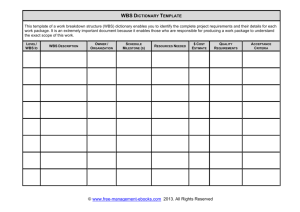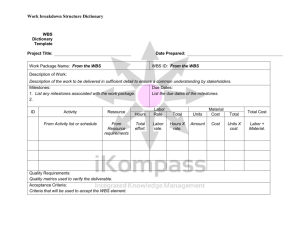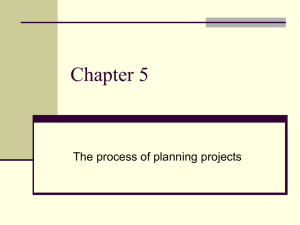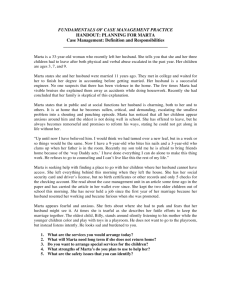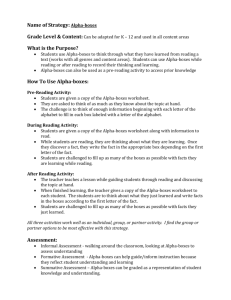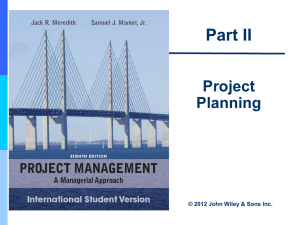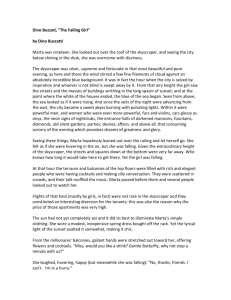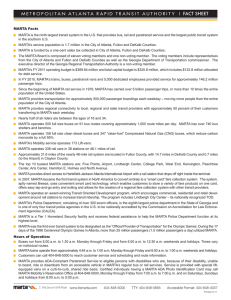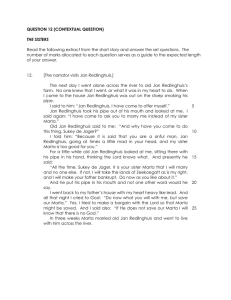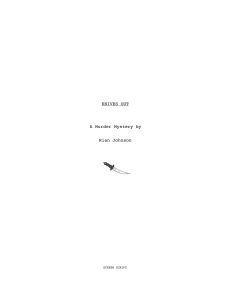Project Pointers - Marta Brockmeyer, Ph.D.
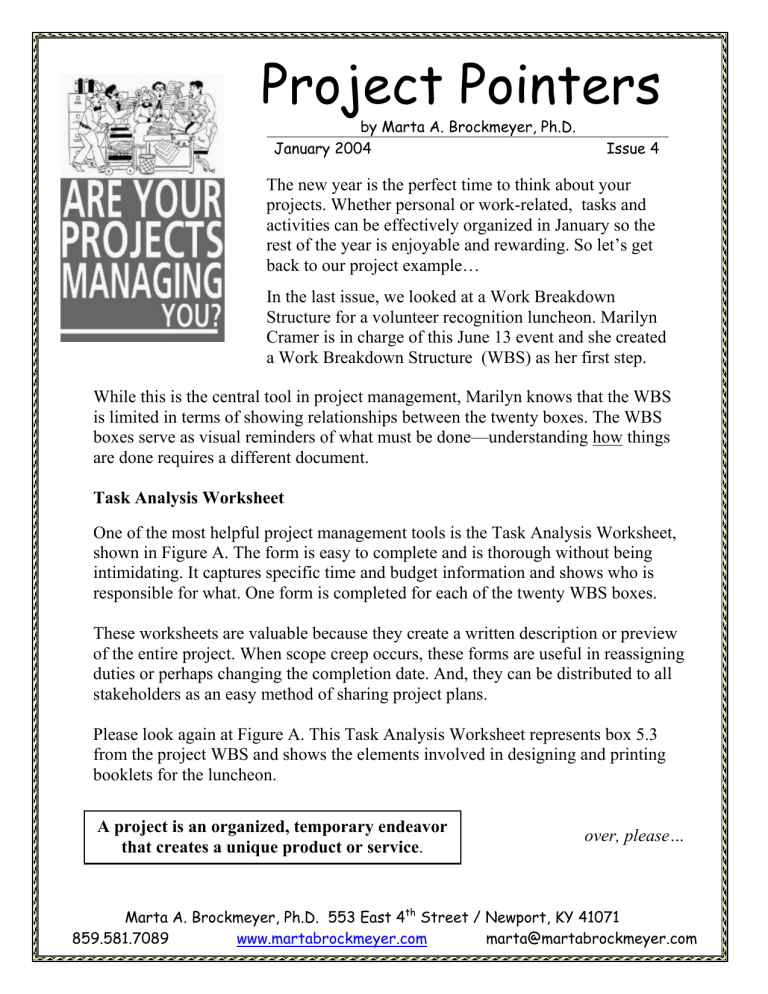
Project Pointers
by Marta A. Brockmeyer, Ph.D.
January 2004 Issue 4
The new year is the perfect time to think about your projects. Whether personal or work-related, tasks and activities can be effectively organized in January so the rest of the year is enjoyable and rewarding. So let’s get back to our project example…
In the last issue, we looked at a Work Breakdown
Structure for a volunteer recognition luncheon. Marilyn
Cramer is in charge of this June 13 event and she created a Work Breakdown Structure (WBS) as her first step.
While this is the central tool in project management, Marilyn knows that the WBS is limited in terms of showing relationships between the twenty boxes. The WBS boxes serve as visual reminders of what must be done—understanding how things are done requires a different document.
Task Analysis Worksheet
One of the most helpful project management tools is the Task Analysis Worksheet, shown in Figure A. The form is easy to complete and is thorough without being intimidating. It captures specific time and budget information and shows who is responsible for what. One form is completed for each of the twenty WBS boxes.
These worksheets are valuable because they create a written description or preview of the entire project. When scope creep occurs, these forms are useful in reassigning duties or perhaps changing the completion date. And, they can be distributed to all stakeholders as an easy method of sharing project plans.
Please look again at Figure A. This Task Analysis Worksheet represents box 5.3 from the project WBS and shows the elements involved in designing and printing booklets for the luncheon.
A project is an organized, temporary endeavor that creates a unique product or service . over, please…
Marta A. Brockmeyer, Ph.D. 553 East 4 th Street / Newport, KY 41071
859.581.7089 www.martabrockmeyer.com
marta@martabrockmeyer.com
Marta’s New Website
Learn more about Marta’s consulting services and project management experiences at:
www.martabrockmeyer.com
First, it is important to think about predictable, significant project tasks and events.
These important interim deadlines or completion points are called milestones . In this example, five distinct milestones are used to lay out what must be done. Walking through the time allowed for each of the five milestones, it is clear that a total of seven weeks will be required to complete Task 5.3.
But in project management, nothing occurs in a vacuum. Booklets cannot be printed until certain other steps have been accomplished. In other words, one task is dependent on another. Looking at the second section of the Task Analysis Form,
Marilyn knows she cannot begin printing until the authority to do the project has been given, the budget has been adopted, the case for support has been written and the appeal has been designed. At the same time, other project tasks are dependent upon the print materials. This obviously must occur before the mailing is finished, all solicitations are made and receipts and thank you notes have been mailed. These relationships and dependencies create much of the challenge of project management.
It’s easy to assign work without thinking about the financial implications. In nonprofits particularly, staff time is frequently not included in budget projections. Project management forces this issue, so the true resource allocations for a given project are much more accurate. Staff time costs.
Finally, names are included on the form for both symbolic and practical reasons. It should be clear to all stakeholders exactly who is charged with any piece of the project.
This is not so much for “finger pointing” as for smoothing communication lines, saving time and sharing the credit. It is always a good way to insure that those pieces actually get done.
Questions or Comments? marta@martabrockmeyer.com
Weighted Average Technique
To complete the Task Analysis Worksheet, consider the people involved—including yourself. First, think about the work habits and pace of the people who may be involved. If
Terry Evans is a cautious, slow person, she may not be the most reliable person for estimating how long it may take to solicit gift donations. If Mike Harrod tends to be overly optimistic about most things, then his estimate about the number of days required to select a location may not leave enough time to do a good job. Sometimes it helps to ask several people, then pick a mid-range figure. Here is a formula that will help you estimate time:
The Weighted Average Technique
Te = Estimated time a = Most optimistic time to complete a task. Everything
will go exactly as planned with minimal difficulties.
This will occur about 5% of the time.
b = Most pessimistic time to complete a task. Nothing
will go as planned and disaster will occur. This will
occur about 5% of the time. m = Most likely time to complete a task. Time after time
experience has shown that this is how long you can
expect the task to take.
Te = a + (4m) + b
6
In the last newsletter, you were asked to select a project and create a WBS. Using your personal project WBS, try to complete a Task Analysis Worksheet for each of the boxes.
We will be building on this concept in the next newsletter. In the meantime, I send my best wishes for a wonderful 2004!
Questions or Comments? marta@martabrockmeyer.com
Task: 5.3
Design of Print Materials
Task Milestones Measurement
1. Interview graphic designers
2. Select graphic designer
3. Review proposed design
4. Edit/approve design
5. Print
Schedule and facilitate
3 interviews
Review portfolios
Confer with stakeholders
Submit final changes
Email to printer
Task(s) on Which This Task in Dependent:
1.1 Authority
4.4 Adoption of budget
5.1 Case for support
5.2 Design of appeal
Task(s) Which are Dependent on This Task:
5.4 Mailing
6.1-6.3 All solicitations
7.1-7.3 Receipt/thank you’s
Itemized Task Budget:
Printing $2,800
1 staff @ 10 hours @ $40 per hour 400
1 graphic designer 2,500
Total $5,700
Assigned to:
Joanna Davis
Report to:
John McCready
Time
2 weeks
1 week
2 weeks
1 week
1 week
Figure A
Questions or Comments? marta@martabrockmeyer.com

